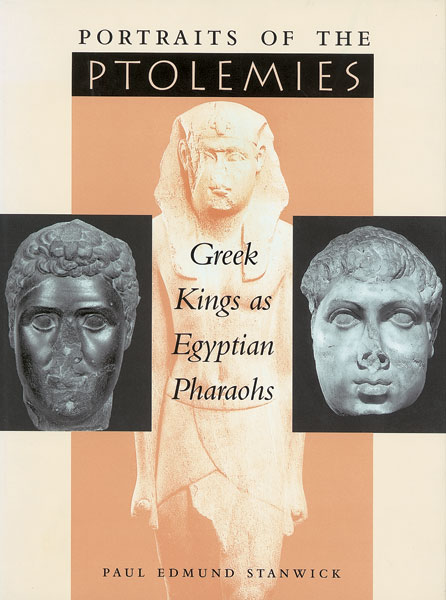
Portraits of the Ptolemies: Greek Kings as Egyptian Pharaohs
Paul Edmund Stanwick
(Austin: University of Texas Press, 2003) 256 PP., $55
The power and wealth of the Greek Ptolemaic dynasty—which ruled Egypt from the death of Alexander in 323 B.C. to the suicide of Cleopatra in 30 B.C.—are apparent in the magnificent royal statues commissioned by Ptolemaic kings. The author of this scholarly text shows how to “read” various sculptural conventions as expressions of ideology. Ptolemaic kings, for example, are depicted with symbols of pharaonic rule (such as double-crown headdresses, which represent Upper and Lower Egypt), while they retain their Greek-style hair and facial features.

Greek Gold from Hellenistic Egypt
Michael Pfrommer
(Los Angeles: Getty Publications, 2002) 96 PP., $17.50
Alexander the Great’s conquest of the Persian empire in the fourth century B.C. put vast amounts of gold at the disposal of Greek jewelry makers, who refined their skills over the next three centuries. Some of the most exquisite gold jewelry produced during the Ptolemaic period in Egypt—a hoard recovered from a single grave in Alexandria—are arrayed on the pages of this lushly photographed volume published by the Getty Museum in Los Angeles. The shimmering rings, bracelets, hoop earrings and beads likely belonged to a priestess of a royal cult.

Ptolemy’s Geography
J. Lennart Berggren and Alexander Jones
(Princeton: Princeton University Press, 2002) 216 PP., $24.95
Another ancient Alexandrine named Ptolemy (unrelated to the city’s Hellenistic rulers) left his mark on the Hellenistic world. Claudius Ptolemaeus (87–150 A.D.)—astronomer, mathematician, geographer—wrote the only book on cartography to have survived from the classical period. In his Geography, Ptolemy introduced the principles of mapmaking (including the ideas of longitude and latitude); his work remained the standard work until the time of Columbus. This translation is accompanied by interesting historical and technical explanations, as well as color photographs of ancient maps that appeared in early manuscripts.

